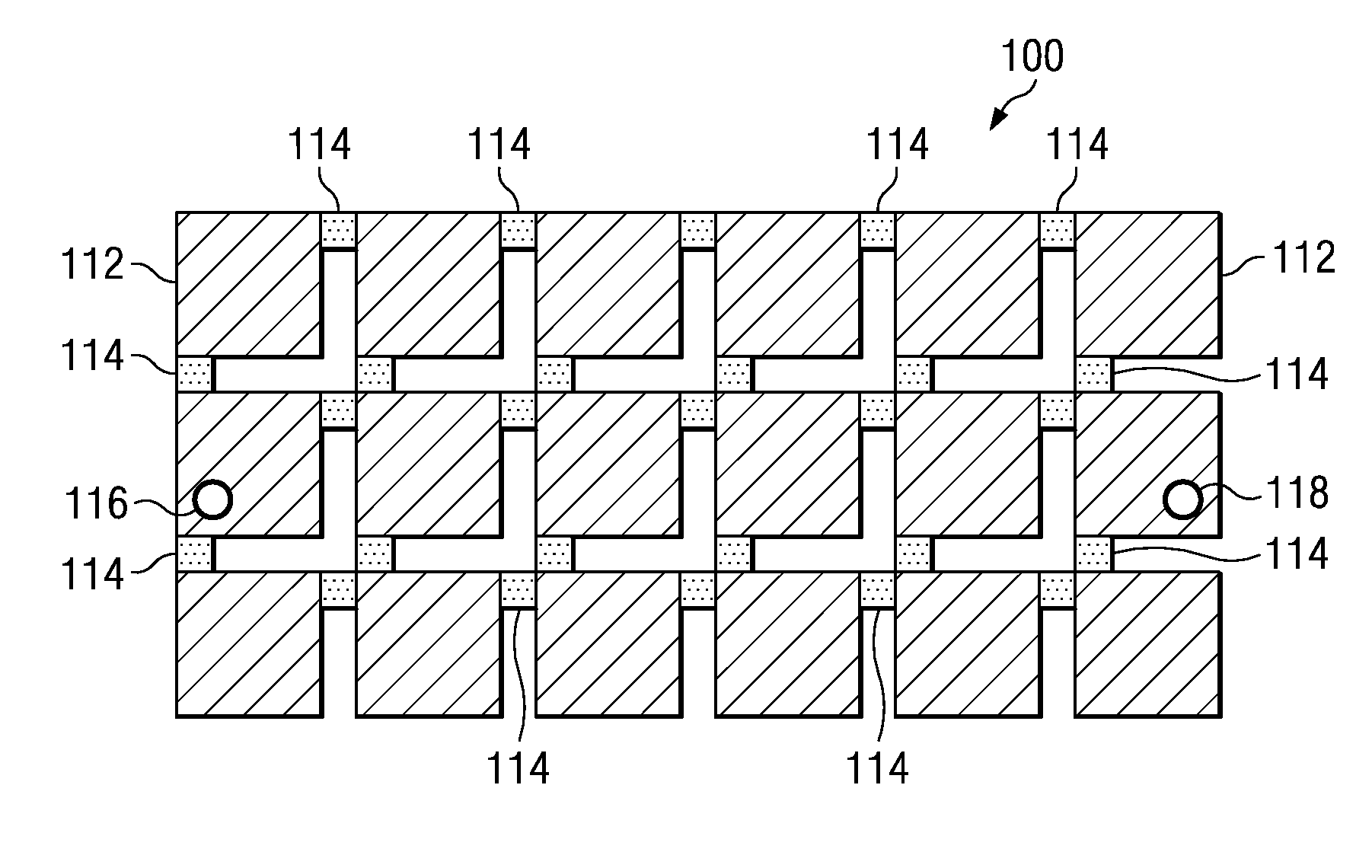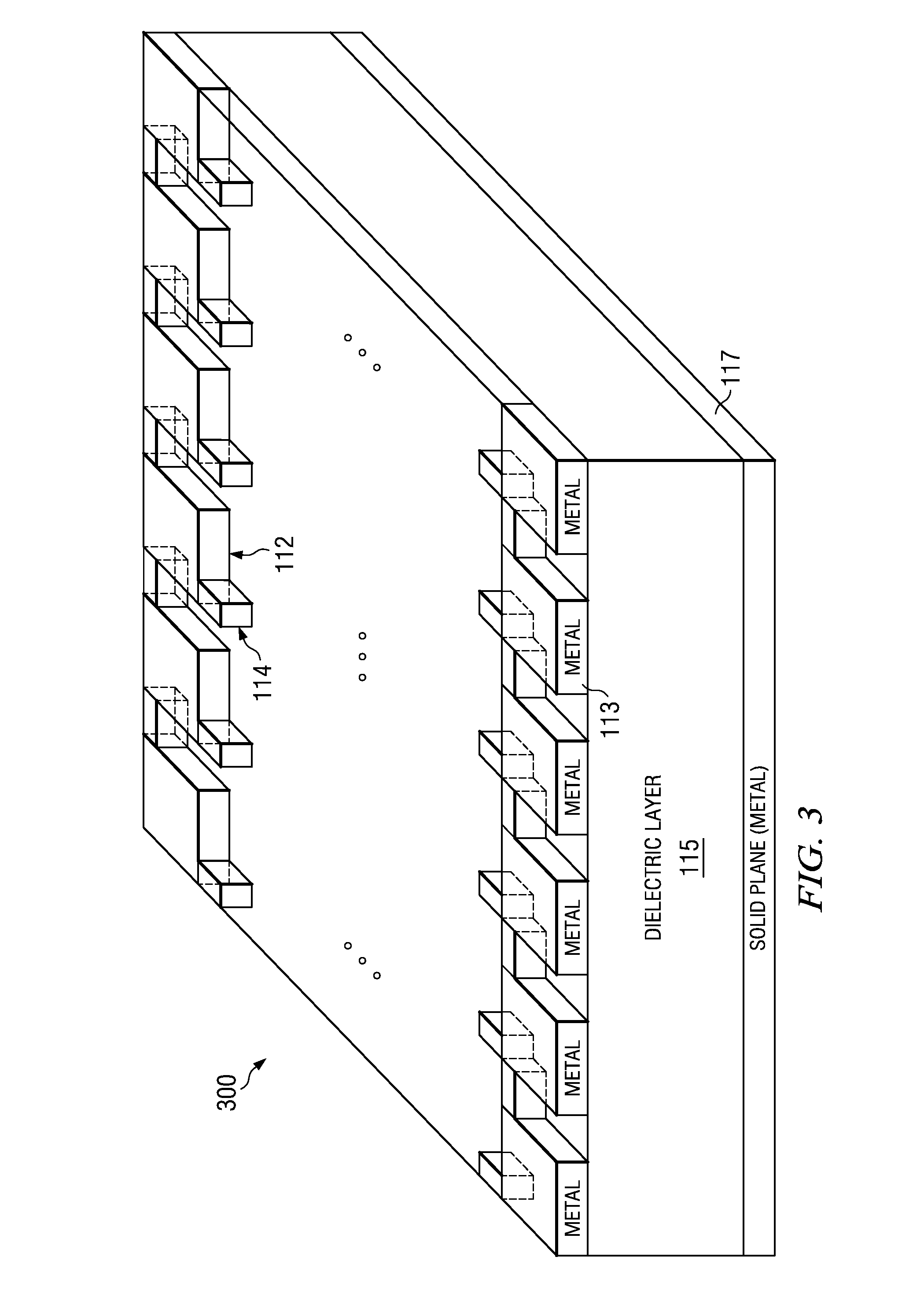Method for Ultimate Noise Isolation in High-Speed Digital Systems on Packages and Printed Circuit Boards (PCBS)
a technology of digital systems and printed circuit boards, applied in the direction of pulse manipulation, pulse technique, electrical apparatus contruction details, etc., can solve the problems of unfavorable power distribution in computer systems, power supply noise, delta-i noise, and simultaneous switching noise, etc., to achieve excellent isolation and improve noise isolation
- Summary
- Abstract
- Description
- Claims
- Application Information
AI Technical Summary
Benefits of technology
Problems solved by technology
Method used
Image
Examples
Embodiment Construction
[0028]Referring now to the figures and in particular to FIG. 1, there is shown one type of AI-EBG structure that provides noise isolation for a wide frequency range in high frequency. FIG. 1 illustrates a top view of one embodiment of a system having an AI-EBG structure 100. The AI-EBG structure 100 has an AI-EBG plane that includes a plurality of first elements 112 continuously connected by a plurality of second elements 114 in the same dimensional plane (not all of the first and second elements are labeled in FIG. 1, in order to not obscure details of the figure). The first elements 112 have relatively low characteristic impedance and the second elements 114 have relatively high characteristic impedance to thus provide a multiple alternating impedance electromagnetic bandgap (AI-EBG) structure. At first location 116 and second location 118, the AI-EBG plane can also be coupled to supply power / ground to various devices or circuits. At first location 116, the AI-EBG plane can be cou...
PUM
 Login to View More
Login to View More Abstract
Description
Claims
Application Information
 Login to View More
Login to View More - R&D
- Intellectual Property
- Life Sciences
- Materials
- Tech Scout
- Unparalleled Data Quality
- Higher Quality Content
- 60% Fewer Hallucinations
Browse by: Latest US Patents, China's latest patents, Technical Efficacy Thesaurus, Application Domain, Technology Topic, Popular Technical Reports.
© 2025 PatSnap. All rights reserved.Legal|Privacy policy|Modern Slavery Act Transparency Statement|Sitemap|About US| Contact US: help@patsnap.com



